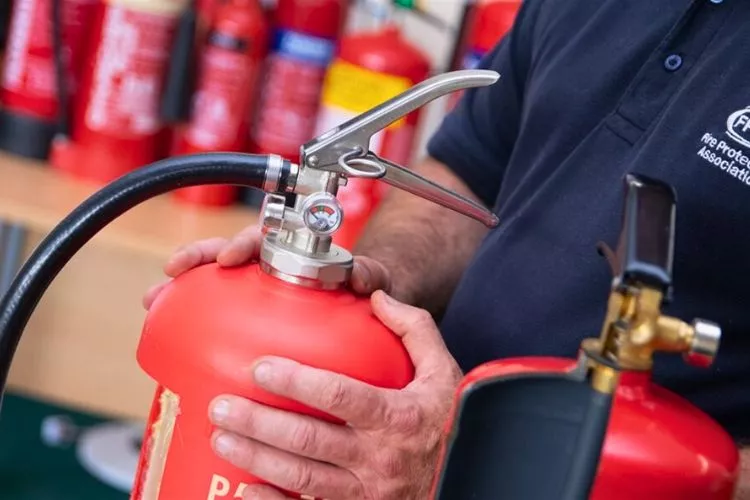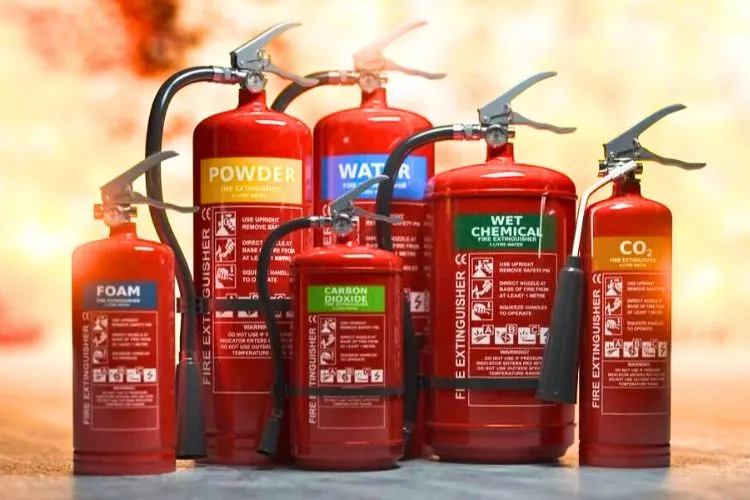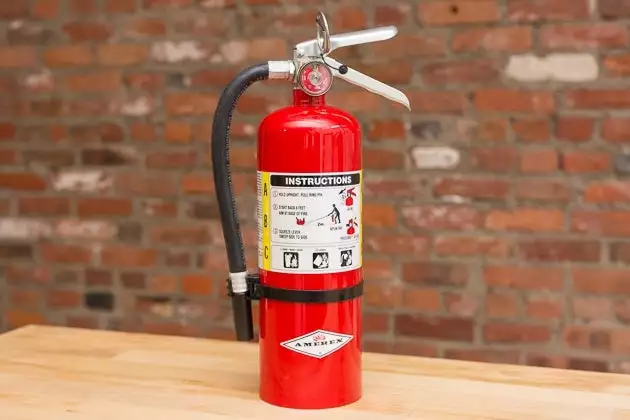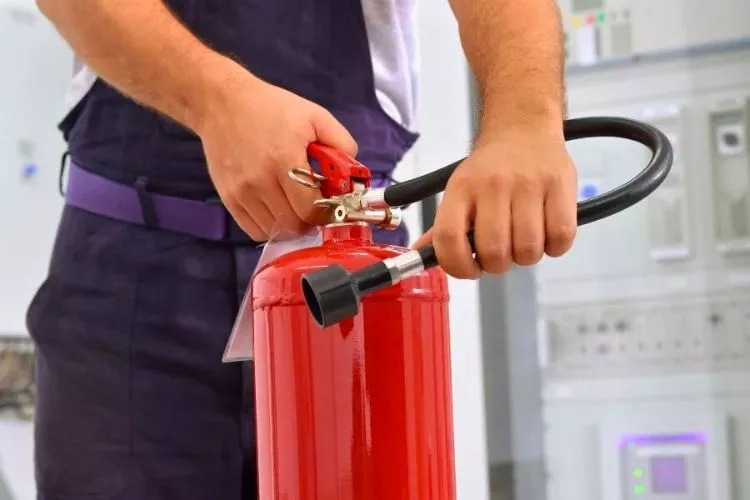Fire safety is a crucial topic. We depend on fire extinguishers to keep us safe. They help stop fires in homes, workplaces, and public areas.
But can fire extinguishers freeze? This is a vital question, as a frozen extinguisher is useless in an emergency. In this article, we will explore if fire extinguishers can freeze.

We will also discuss the factors that can cause them to freeze. This includes temperature, humidity, and the type of extinguisher.
We will cover ways to prevent freezing and maintain their effectiveness. So, stay with us as we learn more about this essential fire safety tool and how to protect it from freezing.
Can fire extinguishers freeze?
Yes, fire extinguishers can freeze. The type of extinguisher plays a role in its risk of freezing. There are different types, like water, foam, and CO2.
The water and foam ones are most at risk. When temperatures drop below freezing, these extinguishers might become useless.
To prevent this, check the label on your extinguisher. It will show the temperature range it can handle. Usually, it is between -40°F and 120°F.
Keep the device in a warm and dry spot within this range. This will ensure it remains effective during an emergency.
In conclusion, fire extinguishers can freeze. It depends mainly on the type and the temperatures they encounter.
Store them within the recommended range to keep them operational. This way, they will work when needed and keep everyone safe.
Impact of Temperature on Various Fire Extinguishers
Fire extinguishers have recommended temperature ranges for effective storage. The temperatures mainly depend on the type of extinguishing agent used. We’ll delve deeper into the freeze point of each.

Water and Foam Extinguishers
Water and foam fire extinguishers are prone to freezing as they contain water. They are typically rated for temperatures down to 0°C (32°F).
For areas with a colder climate, antifreeze extinguishers designed for temperatures as low as -30°C (-22°F) are advisable.
Dry Chemical Extinguishers
Dry chemical extinguishers, whether they use monoammonium phosphate or sodium bicarbonate, typically work within a broad temperature range.
They can handle conditions from -40°C to 49°C (-40°F to 120°F). This feature makes them suitable for indoor and outdoor storage.
CO2 Extinguishers
CO2 extinguishers generally function effectively between -40°C and +60°C (-40°F and 140°F). The gas inside does not freeze at standard freezing temperature, providing a wide range of operation.
Wet Chemical Extinguishers
Wet chemical fire extinguishers, generally used for class K fires (kitchen fires and burning oils), operate best between 0°C and 60°C (32°F and 140°F).
As their liquid agent is liable to freeze at lower temperatures, indoor storage or heated cabinets are recommended for colder climates.
Fire extinguishers, regardless of type, function optimally within specific temperature ranges. Too high or too low temperatures adversely affect their performance and longevity. It’s essential to remember these recommendations for effective fire safety.
Suitable storage conditions for fire extinguishers to prevent freezing
Storing fire extinguishers right is key. It ensures they work when needed. To stop them from freezing, follow the advice below.

Know the Extinguisher Type
First, know your extinguisher. Different types mean different methods of storage.
Indoor Storage (For All Types)
Store all types of extinguishers indoors if possible. Find a dry, cool spot. It should be accessible in emergencies. This method works for all types.
Outdoor Storage (Special Cases)
In some cases, it must be outdoors. For outdoor storage, the task is trickier. You need protection against the elements.
Outdoor storage boxes are useful. They offer insulation and protection. Use them for all types of extinguishers. Heated cabinets work for wet chemical and water.
They maintain a minimum temperature. So the extinguisher doesn’t freeze. It needs a power source.
Monitor the Environment
Next, keep watch on the environment. Changes in seasons matter. So do day and night cycles.
Exposure to the elements hurts the extinguishers. Humidity forms rust. Sunlight fades the instructions. Freezing temperatures lead to freezing.
Check on the extinguishers often. Make sure they are not damaged. Move them indoors if possible. Else, better protect them from the elements.
Follow Temperature Guidelines
Each extinguisher shows a temperature range. Check the label. Keep it in that range. If the storage area gets colder than that, move them. Bring them indoors, if possible. If not, insulate them properly.
Educate and Train
Training is essential. Everyone needs to know how to use and store an extinguisher. They need to know where to find them too.
All users should learn the importance of storage. They should know how temperature affects the extinguishers. Know the right place to store them and why.
Education ensures proper usage. It prevents damage and ensures effectiveness.
Regular Maintenance
Regular checks are important. Check the pressure gauge. See if there is any physical damage. Upgrade to a new one if needed. This helps identify issues early. It prevents damage. It ensures it works when needed.
In conclusion, the right storage of fire extinguishers is key. It prevents freezing and ensures they work when needed. Indoor storage is best, but outdoor storage is possible with care.
Regular maintenance and employee training also help. These steps ensure the extinguishers work in an emergency.
You may also read: How Often Do Fire Extinguishers Need To Be Inspected?
Solutions to stop fire extinguishers from freezing in cold weather
Taking preventive measures against freezing fire extinguishers is top priority in colder climates. Here are some useful methods:

- Proper Selection: Choose fire extinguishers suitable for cold weather. Those designed for low temperatures prevent freezing issues. For instance, dry chemical extinguishers operate well down to -40°C (-40°F).
- Heated Cabinets: If using water or foam extinguishers outdoors, consider heated cabinets. These cabinets maintain a constant warm temperature. It prevents the extinguishing agent from freezing.
- Insulation: A low-tech solution is insulation. Insulated boxes or covers add a layer of warmth. They help maintain the temperature of the extinguisher. It’s useful for outdoor ones in a cold environment.
- Antifreeze Extinguishers: Antifreeze extinguishers are another option. They function well down to -30°C (-22°F). They are best for outdoor situations in cold weather. They have an antifreeze agent mixed in. It stops the water from freezing.
Protecting fire extinguishers from freezing requires deliberate choices. From selection to storage location, each decision impacts how equipment withstands cold weather.
Regular maintenance identifies issues before they escalate. These steps help ensure safety equipment is ready to perform when needed.
Conclusion:
Throughout the article on “Can Fire Extinguishers Freeze?”, we have delved into the susceptibility of various fire extinguishers to freezing temperatures.
Evidently, some extinguishers, such as water, foam, and wet chemical types, are more prone to freezing than others like dry chemical and CO2 extinguishers.
It’s crucial to understand the distinct vulnerability of each type and the temperature range at which they function effectively to ensure performance during an emergency.


